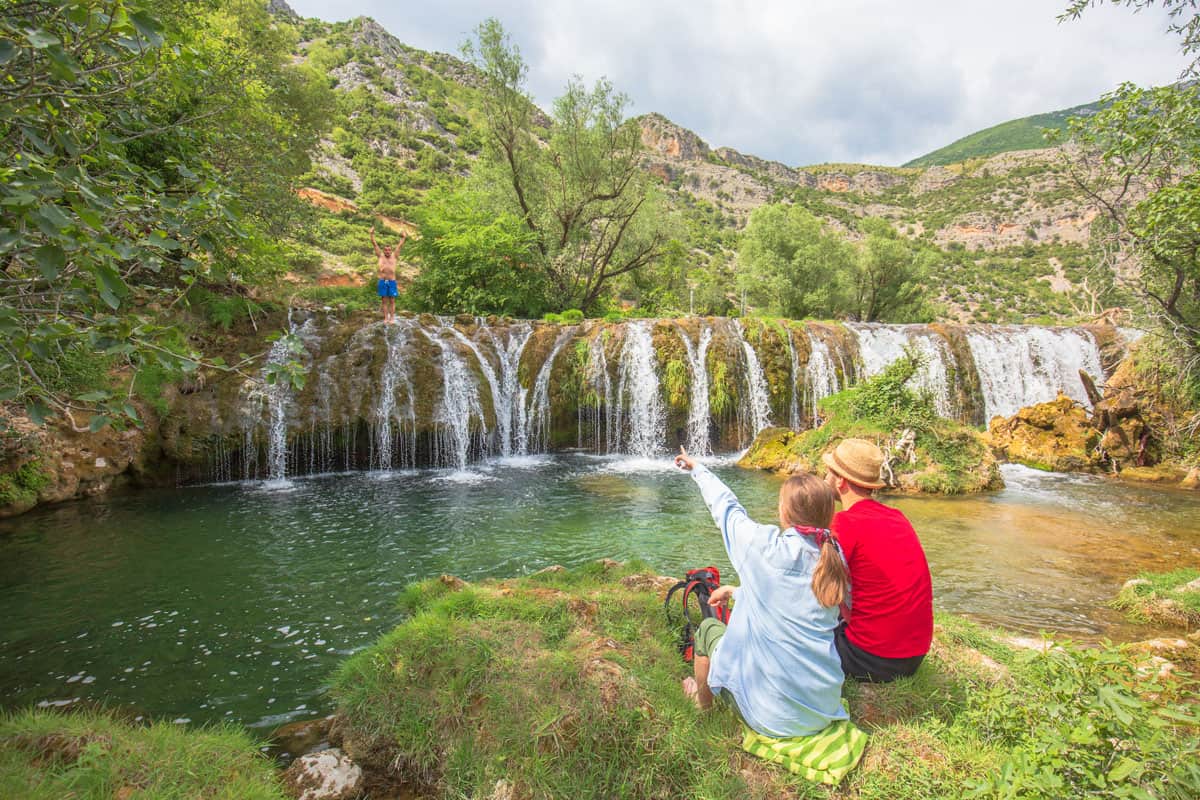
The bridges and grinding and fulling mills on the Bregava river are a valuable monument and testimony of the local building techniques. The Bregava river flows through Stolac, separates into inlets and then reunites, forming natural waterfalls above the Begovina residence, known as Pjene, and above the area of Propa, the waterfall Provalije. From the 15th century onwards, the river Bregava was used as a site for the construction of mills for grinding wheat and fulling, washing and dying broadcloth. The mills were part of the foundations of the Stolac families Behmen, Buzaljko, Elezović, Lalić, Leto, Mahmutćehajić, Matić, Mehmedbašić, Haračić, Rizvanbegović, Sidran, Soldin, Šator, Turković and others.
In the centre of town there is bridge called Ćuprija, which gave its name to the nearby mosque and area around the bridge. The builder and time of construction of the bridge are not known, but it may well be a medieval object, which survived to our day with certain adaptations and occasional smaller and larger reparations. According to a legend, the Ćuprija bridge was built in the 17th century, when during the absence of the governor of Stolac the usurper Trtak took power and ordered the construction of the bridge. Out of spite towards the usurper, the builders constructed a bridge in which each arch is irregular. After this legend, the Ćuprija is also known as the Spite bridge.